Earlier this week, we made homemade beef stew in the Instant Pot. Now, let’s make homemade einkorn biscuits to serve alongside that stew.

Want to Save This Recipe?
Enter your email & I’ll send it straight to your inbox. And you’ll get new recipes & tips each week.
Once again, we’re going to open up the flour jar and make biscuits with the ancient grain so many of us have come to love: einkorn.
All-purpose einkorn is perfect for making biscuits, because it acts similar to white flour in that it produces a super fluffy and flaky biscuit. And that, in my opinion, is the only way a biscuit should be.

Besides using einkorn, the technique used to make the biscuits is very important. Let’s talk about exactly how to make the perfect biscuits.
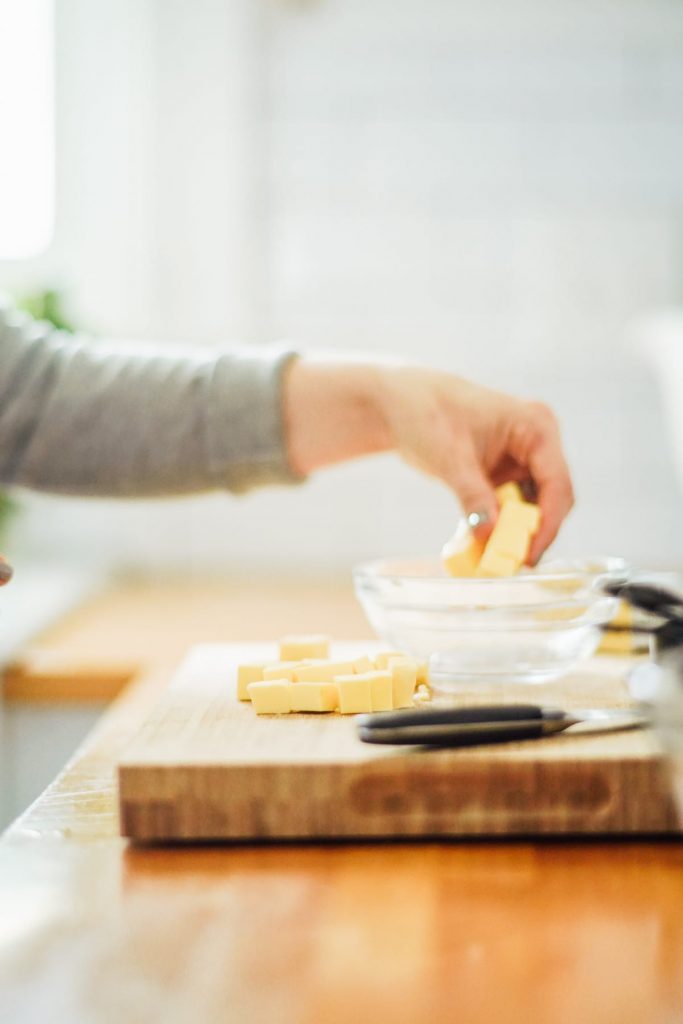
How to make fluffy and flaky homemade biscuits…
First things first, you’re going to need butter, and not just any butter. Good quality butter is a must. Kerrygold brand is what I prefer. Any rich, grass-fed butter should do.
Second, the butter needs to be kept chilled in the fridge before it’s added to the flour.
Third, don’t use your fingers to crumble the butter with the flour. Your fingers are warm (body temperature), which means your fingers will warm up the butter quickly. Warm butter = good biscuits, but not flaky and fluffy biscuits. Just like with pie crust and scones, it’s important to keep the butter as cold as possible throughout the process. This means using a pastry cutter, or two knives, when working the butter into coarse crumbs.

Next, let’s talk about kneading. Einkorn naturally doesn’t love to be over-worked. Einkorn is more of a hands-off grain. Knead einkorn dough as much as needed, nothing more. This is also true when mixing einkorn muffin batter.
For biscuits, it’s particularly important to stir the liquid and dry ingredients together, just until they begin to come together. Then stop using a spoon and form the dough with your hands. (I know, I just told you not to use your fingers, but this is the only option at this point. That’s okay.) Knead the dough a few times to get it to come together and form a smooth ball, then let it be. No more kneading or mixing.
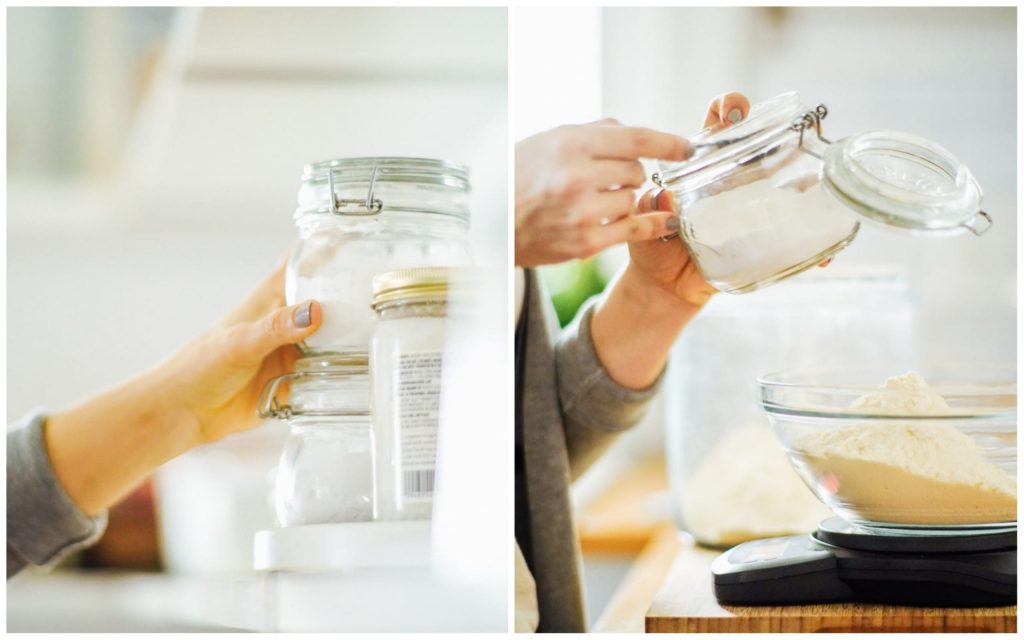

Finally, let’s talk about the folding technique. I learned this technique from a cookbook (I can’t remember the name) years ago, and it’s been my favorite method to use when making biscuits. Use your hands to quickly shape the dough (on a floured surface) into a long rectangle. Then fold one half of the rectangle on top of the other half.

There it is, my best biscuit-making advice.
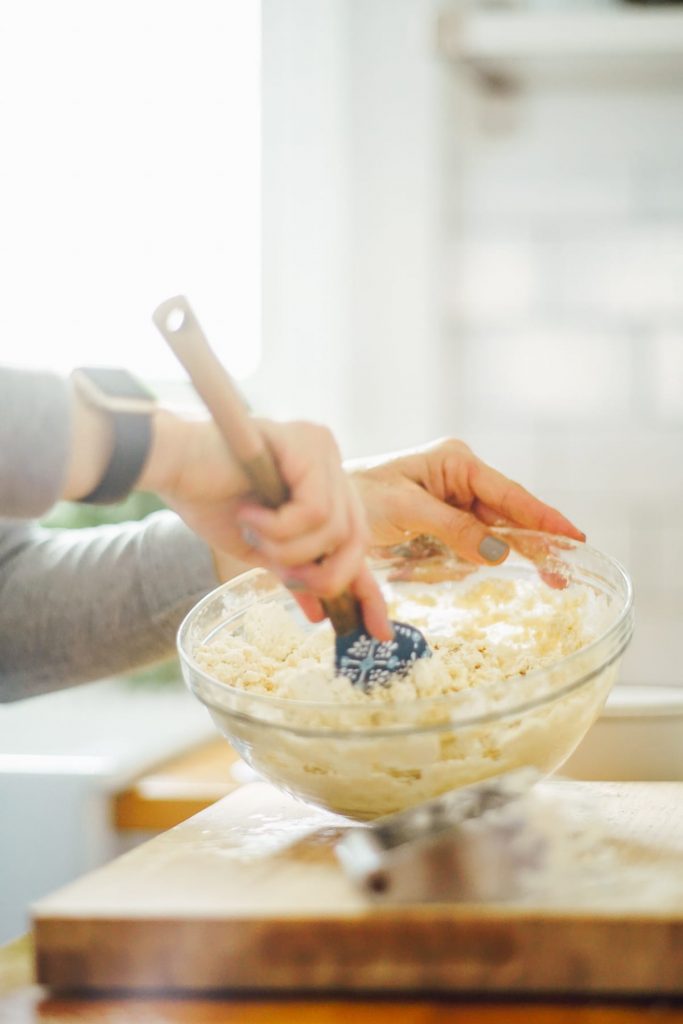
Now, before you get to work making your own biscuits, let’s talk about einkorn flour. I know, if we hang out together often you’re probably well aware of what einkorn is.
Since it’s not a super popular grain, I always like to spend a minute or two sharing the details about einkorn. If you’re familiar with einkorn already, skip ahead, biscuits are waiting to be made.

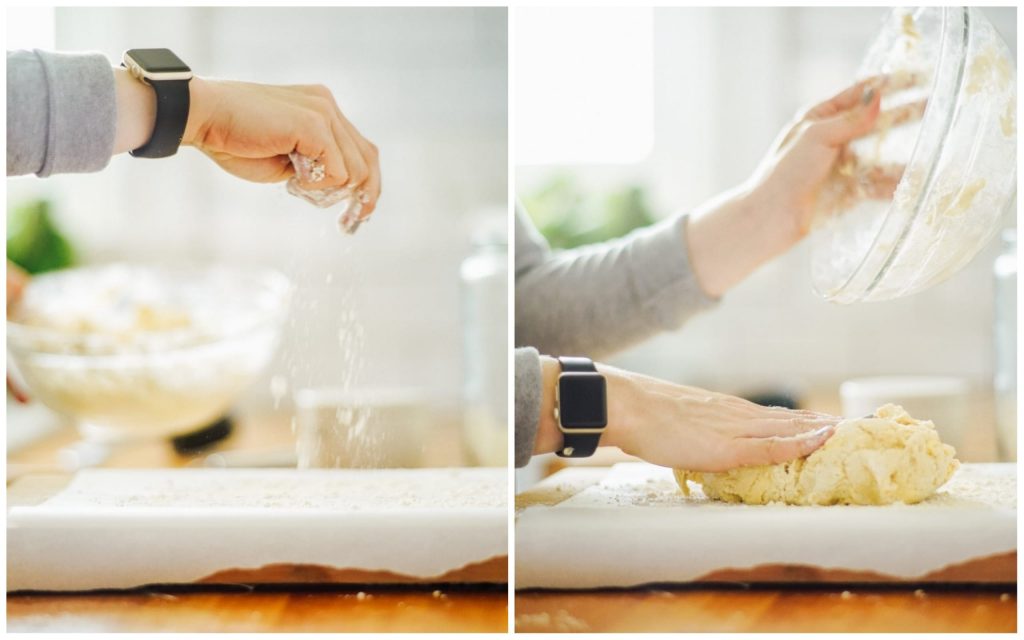
What is einkorn flour?
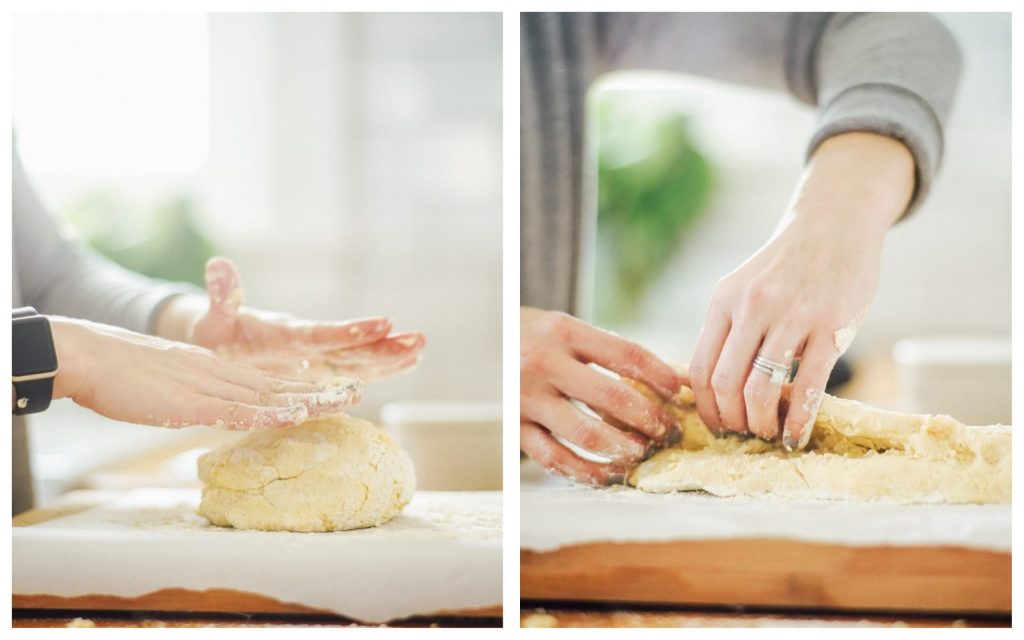
For me, einkorn has been a game-changer in the way I bake and also my ability to consume gluten-based baked goods. (Sourdough and ancient grains, one being a method and the other an ingredient, are easier to digest and a great option for people who may feel sensitive to gluten–not for someone with celiac disease.) In a day when gluten is feared, I think it’s important to reconsider the use of ancient grains and also ancient methods, like souring and sprouting.
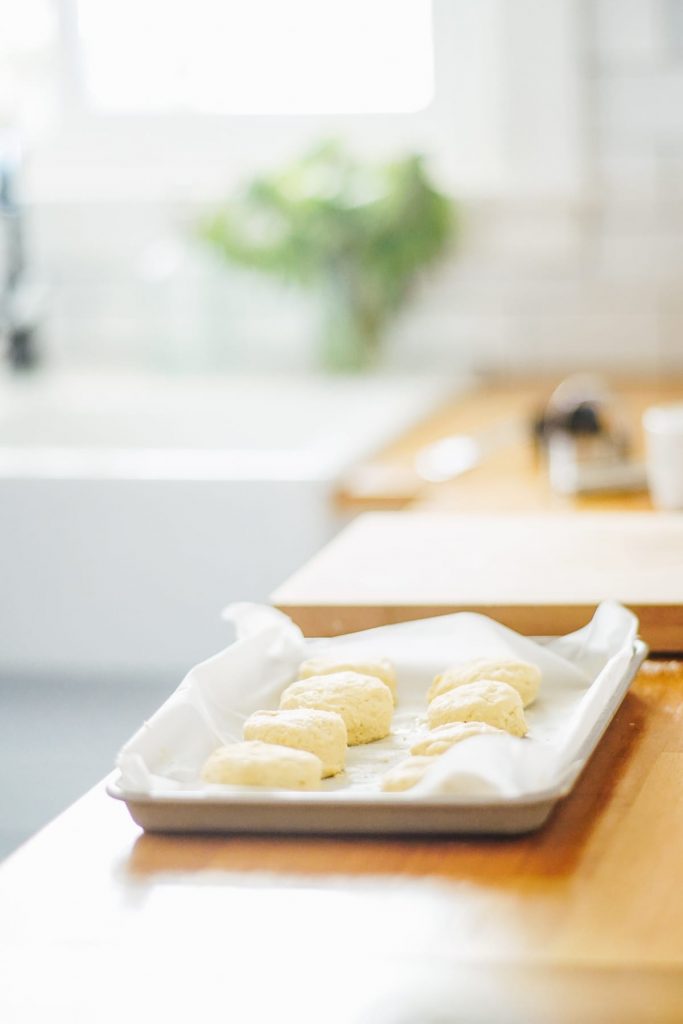
Einkorn is known as the oldest variety of wheat making it an “ancient” grain. The ancient grain is believed to have originated in the Tigris-Euphrates region and is possibly the main grain referenced in the earliest accounts of the Bible.

Einkorn is said to be the wheat men were eating in the earliest days before modern day wheat varieties. While modern wheat has undergone hybridization, einkorn still holds true to its original properties. Einkorn is slowly gaining popularity, but it’s still grown in only a few regions in Europe. This means many people, including myself just a few years ago, don’t know about this wonderful grain.
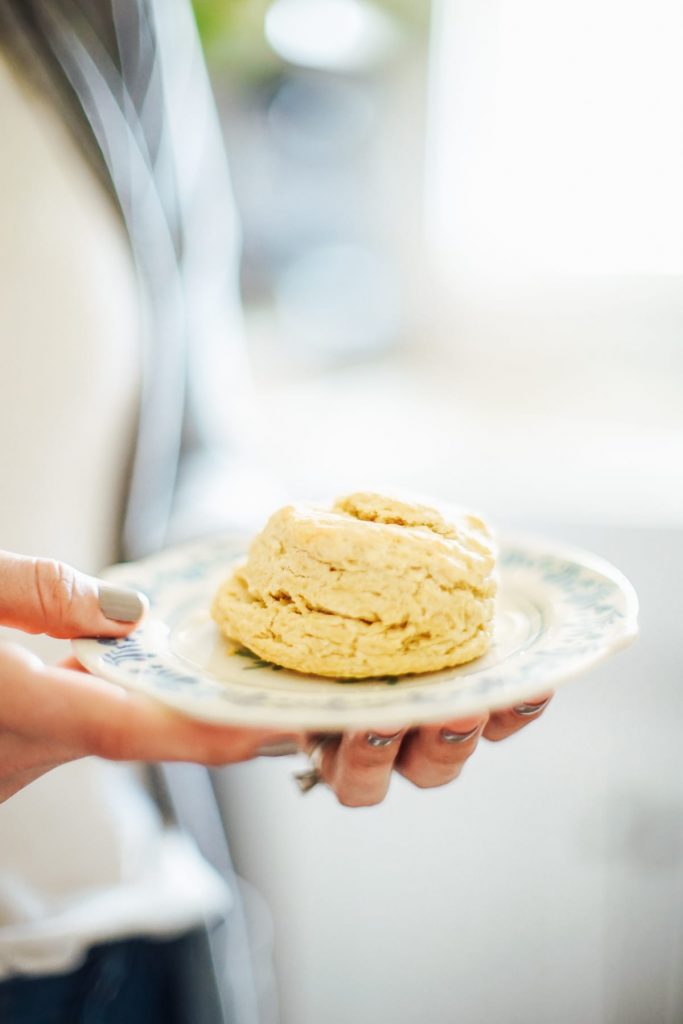
Einkorn is my favorite flour to work with when making traditional, flour-based baked goods. The sweet, ancient grain has a lighter texture and taste than modern day wheat, and contains a more favorable gluten ratio.

Pair the einkorn biscuits alongside eggs (one of 16 different egg styles), healthy yogurt bowls, or a smoothie.
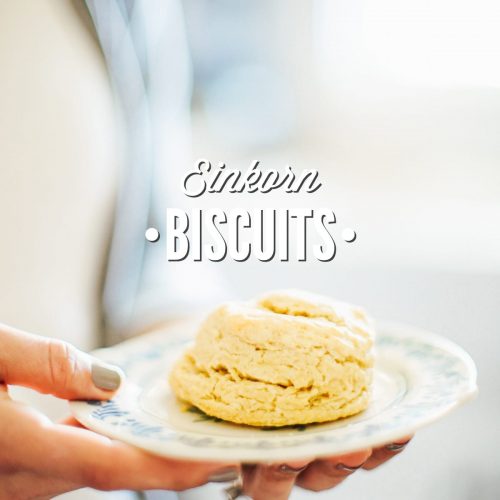
Homemade Einkorn Biscuits
Ingredients
- 2 1/2 cups all-purpose einkorn flour (293g)
- 1 1/2 TB baking powder
- 3/4 tsp salt
- 8 TB unsalted butter cubed and kept chilled until ready to use
- 3/4 cup whole milk or a dairy-free milk, like almond milk also works
Optional:
- 1 TB whole milk or dairy-free milk for brushing the top of the biscuits
Special Equipment:
- sheet pan
- parchment paper
- pastry cutter or two knives, for crumbling the butter
- biscuit cutter
Instructions
- Preheat the oven to 400F.
- Cut the butter into cubes. Place the butter in the fridge to keep chilled until ready to use.
- In a large bowl, whisk together the flour, salt, and baking powder.
- Add the cold butter cubes to the flour. Use a pastry cutter (or two knives) to crumble the butter into the flour mixture, until the butter resembles coarse crumbs.
- Pour the milk into the the flour mixture, stirring just until combined. Using a wooden spoon and then your hands (gently kneading the dough if necessary), form the dough into a ball.
- Sprinkle a parchment-covered surface with a small amount of extra flour. Form the dough, using your hands, into a long rectangle. Fold the dough in half, lengthwise and gently press together.
- Using a biscuit cutter, cut out individual biscuits. Place the biscuits on a sheet pan or stone. I like to line my sheet pan with parchment paper. Brush the top of each biscuit with the 1 tablespoon of milk, if desired. Another option is to use melted butter instead of the milk.
- Bake for 17-20 minutes, until the tops are golden and the sides are firm. The time it takes for your biscuits to bake will depend on the size of the biscuits, so keep an eye on them through the oven door. I make fairly large biscuits.

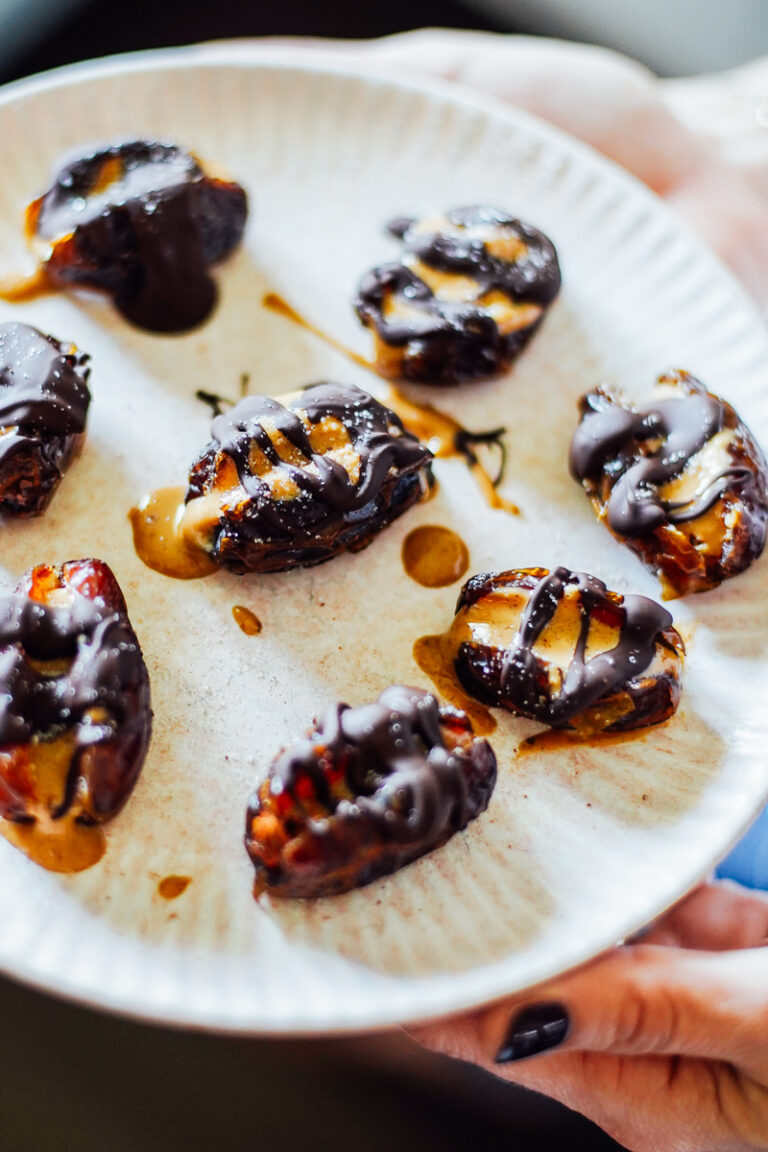
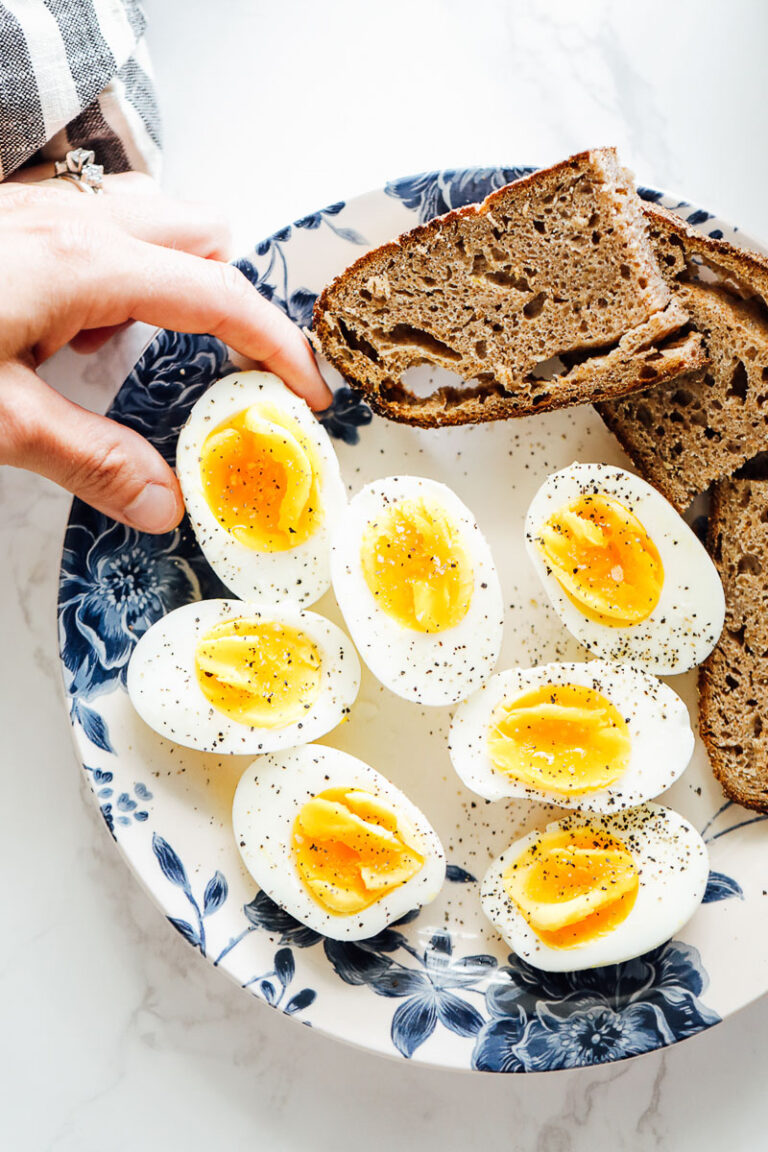
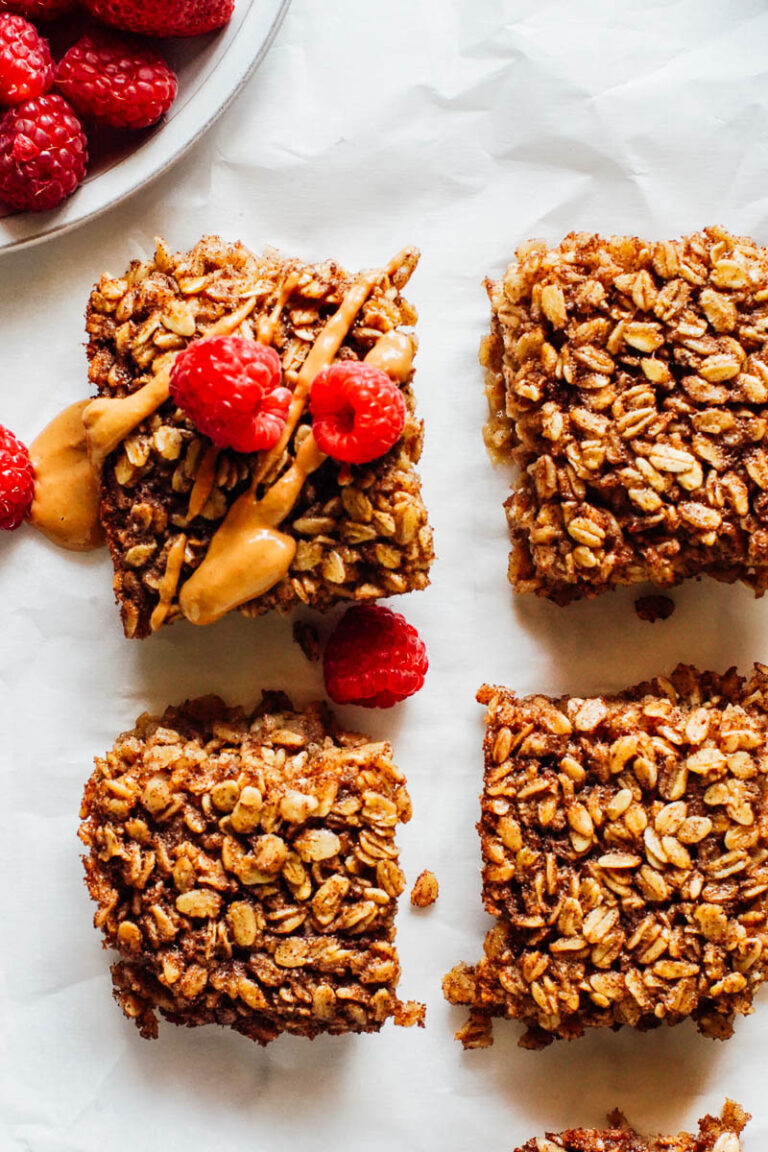

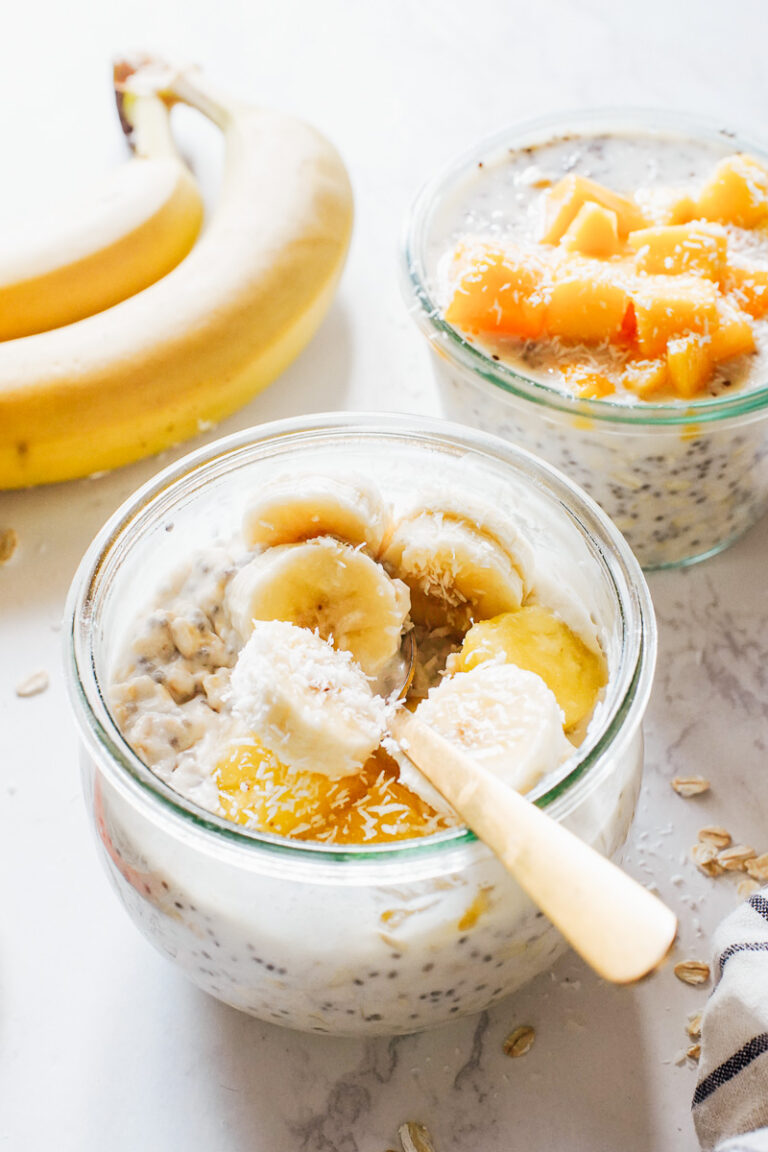
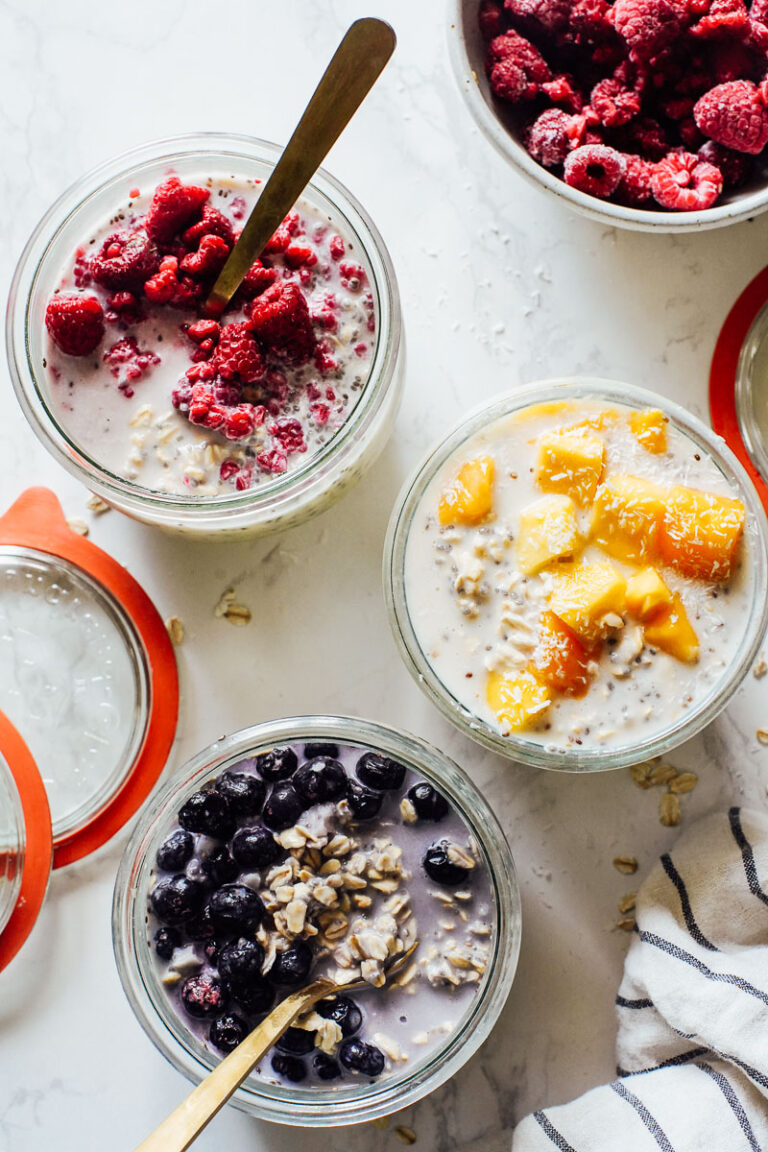
Hi Kristin. I have a couple of questions, but first, thank you for sharing everything Einkorn. I’m just new to this grain and I’m very excited to use it. Can fresh milled einkorn be used in place of AP, and can sourdough discard be used in place of the milk?
TIA
Hey Michele, Yes, you can use fresh milled einkorn in place of AP. For the sourdough discard, I’m not sure, but it’s worth a try. You may need both.
These biscuits were amazing! I wasn’t expecting them to rise as much. Maybe the key was not kneading them as I was directed to do so from another recipe I used. This was just my second time making einkorn biscuits from scratch and this will definitely be my go to recipe. Thanks for sharing!
So glad you liked them, Bianca! Yes, that’s exactly it: very little kneading is the key to biscuits and einkorn!
What size biscuit cutter did you use to get 8 biscuits?
Hey Kristina, I have a set and it’s the largest option. Maybe about 3-4 inches?
I made these biscuits. They turned out perfect and delicious. I was expecting them to be dry, but surprisingly they were crunchy on the outside and moist inside. My daughter who is a picky eater actually enjoyed them. My go to recipe. I used homemade hazelnut milk. Thank you!
Awesome, Pearl. I’m so glad your daughter loved them–thank you for sharing!
I don’t know how to get the dough into a ball and roll it out to when it sticks to absolutely everything.
Hey Kristi, Einkorn dough is usually a much stickier dough compared to other doughs. It takes some getting used to. This is very common with einkorn. If you flour your hands, that should help! Your still going to end up with dough sticking to your hands, but that’s part of working with einkorn doughs. You can add more flour to the dough as well to help.
I used this recipe for my first experience baking with einkorn flour. These were AMAZING biscuits!!! I followed all your instructions to the T. I used the Kerrygold butter and whole milk. The biscuits baked up so high, tender, and very flakey. My husband has been gluten free for the most part for 3 years. We are hoping he will be able to tolerate the einkorn flour because he just has a sensitivity to gluten. He loved these biscuits!! He said it was so nice to have something that has the texture he enjoyed with gluten.
SO happy Kathy! Thank you for sharing!
LS Team
Hey!
Just wanted to let the cooking community know that we subbed cold bacon grease for butter and coconut milk for cows milk. These turned out awesome! I did add more flour to get a biscuit dough instead of soupy dough, big smile. WONDERFUL! We just adore einkorn! Oh and we doubled the recipe and made smaller biscuits. Definite recipe keeper!
That’s awesome, Michelle. Your biscuits sound AMAZING!!! Thank you for sharing.
I only have whole wheat einkorn. Any suggestions for a fluffy biscuit? thank you
Hi Ruby, If you only have whole wheat einkorn, they wouldn’t be super fluffy but there’s really no way to work around that other than use another flour or half another flour.
LS Team.
I’m looking forward to making these! My question is can I substitute ghee in place of the butter? I am wondering if the lack of protein or whatever it is that I scrape off from the butter to make ghee would affect the rise of these? Is that true?
Thanks so much!
Hi Jess, I do not recommend using ghee instead of butter. I would try coconut oil but I have not tried that, just make sure the coconut oil is cold if you do.
Can’t wait to make this! Wondered what you thought about trying to use buttermilk in lieu of whole milk? I have some buttermilk to use up and thought it may work? love all of your recipes!
Hey Laura, thank you. Buttermilk would probably be lovely!
I used buttermilk the very first time I made these and they turned out fantastic!
My biscuit dough was very wet, difficult to cut, and turned out very flat, like half a biscuit. The flavor was good. The only change I made was substituting cream of tartar and baking soda for baking powder because I don’t use baking powder. I used a ratio of 1/2t tartar and 1/4 soda for each tofu powder, so 2 1/4 t tartar and 1 1/8 t soda. Any suggestions?
Hey Kara, Baking powder is essential, in my opinion, to making super fluffy biscuits. I don’t have experience with cream or tartar and baking soda as a sub in biscuits, so I can’t really speak to this.
Fantastic biscuits!! Definitely better than biscuits made with regular flour. I didn’t have whole milk but happened to have buttermilk on hand and they turned out absolutely delicious, slightly crispy on the outside and perfectly tender on the inside. We topped these with homemade sausage gravy and my husband was in HEAVEN. Thanks for the great recipe!
Yum! I followed your recipe using plant milk, Very good.
Awesome, Sherry! I’m so glad you enjoyed the biscuits.
Is the 1 1/2 Tablespoon baking powder measurement correct? Other recipes have called for 1 1/2 teaspoons. Want to try these but afraid the amount is wrong.
Hey Beverly, Yes, it is. You could decrease to 1 TB, if desired. Enjoy!
THE BEST biscuits! They’ve turned out perfect every time I have made them. They go great with sausage gravy.
So happy to hear that, Chardea! Yum!!
I tried it with plant butter. Not bad, a little dry so maybe I baked too long, 20 minutes. Also a little flat, rise not so much.
Definitely plan to try these. I actually FREEZE my butter, then grate it with my WonderMix slicer/grater and use that—the butter stays cold and gets fully incorporated.
These look delicious, thanks for the share!
Thank you!
I made these mine didn’t rise much still too wet until I needed dough a little more. They didn’t hold together real well. I don’t blame your recipe I blame the maker of this batch biscuits. I need more practice to get the right feel of the dough.
Hey Jane, I’m so sorry they didn’t turn out well. Yes, biscuit dough can be tricky to work with–I’ve had the same recipe come out amazing and then sometimes the dough is off just a bit and they don’t rise well. Hope they work out next time.